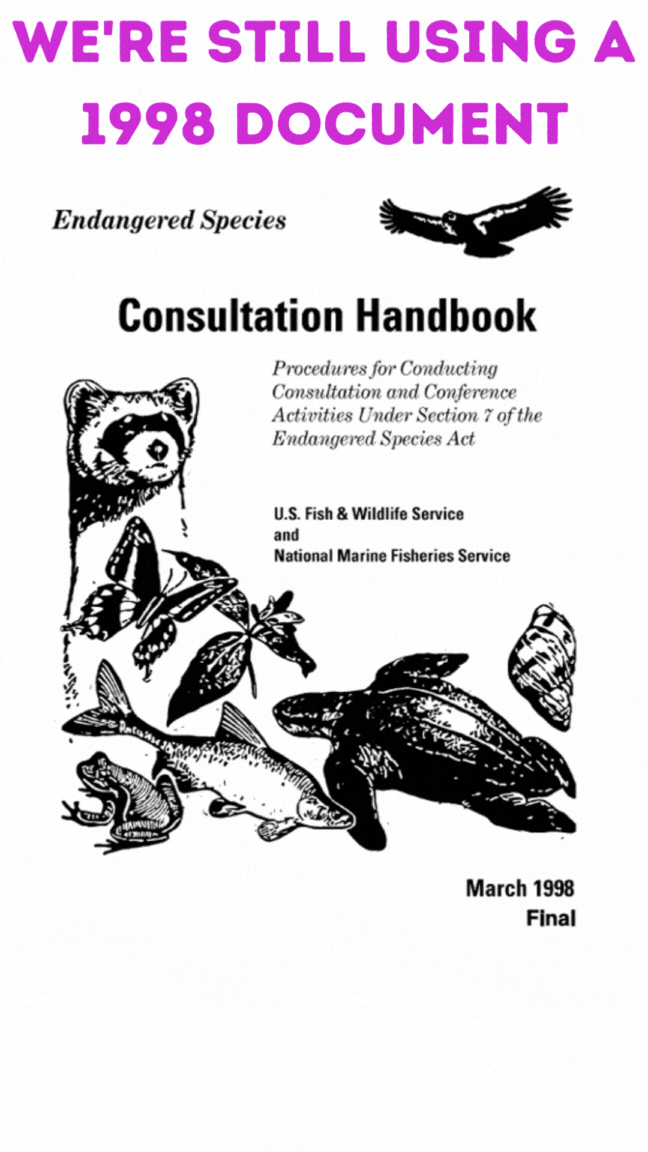3 New Changes for Offsets under ESA Section 7 and 1 Very Old Holdout
The Fish and Wildlife recently put out a proposed rule for amendments to Section 7 of the Endangered Species Act. To read EPIC’s formal comments, scroll down for the link to our comment letter.
While most environmental NGOs will be focusing on the win of un-doing some of the changes made in the Trump Administration (e.g., removal of the ‘blanket rule’ in a separate Section 4(d) amendment), we were interested in some small changes that could have a big impact on the restoration economy. Here are three changes that bolster the use of offsets under Section 7, and one holdout (below).
THREE CHANGES
It allows offsets! The proposed rule now officially recognizes offsetting the impact of incidental take as a reasonable and prudent measure (RPM).
It doesn’t have to be onsite, which is good because doing small postage-stamp mitigation does not usually create the most optimal ecological outcomes.
There is a mitigation hierarchy. “Priority should be given to developing reasonable and prudent measures and terms and conditions that avoid or reduce the amount or extent of incidental taking anticipated to occur within the action area.“
ONE VERY OLD HOLDOUT >>>>>>
All of the changes above are undoing the barriers to offsetting that are in the 1998 Consultation Handbook, which states:
“Section 7 requires minimization of the level of take. It is not appropriate to require mitigation for impacts of incidental take. Reasonable and prudent measures can include only actions that occur within the action area, involve only minor changes to the project, and reduce the level of take associated with project activities.“
This text is obviously contrary to the 3 amendments noted above.
The preamble to the proposed rule mentions that the Fish and Wildlife Service is planning “updates to the Services' Consultation Handbook“ but puts no timeframe on the updates. We really need to update this 25-year old handbook sooner rather than later. 1998 was a very different time. Our computers were gigantic monoliths paired with a chunky cube for a monitor. If you had a cell phone, it was likely a Nokia brick phone. Tamagotchis were apparently a thing.
The Section 7 consultation handbook is so old… someone faxed it to me.
The document’s so old… It makes the internet dial-up sound.
The document’s so old… the staffer conducting species surveys for a section 7 consultation was born after it was published.
OK, ok, just kidding there.
But seriously, we’re looking forward to version 2.0.
The Restoration Economy Center, housed in the national nonprofit Environmental Policy Innovation Center (EPIC), aims to increase the scale and speed of high-quality, equitable restoration outcomes through policy change. Email becca@policyinnovation.org if interested in learning more, sign up for our newsletter, or consider supporting us!


